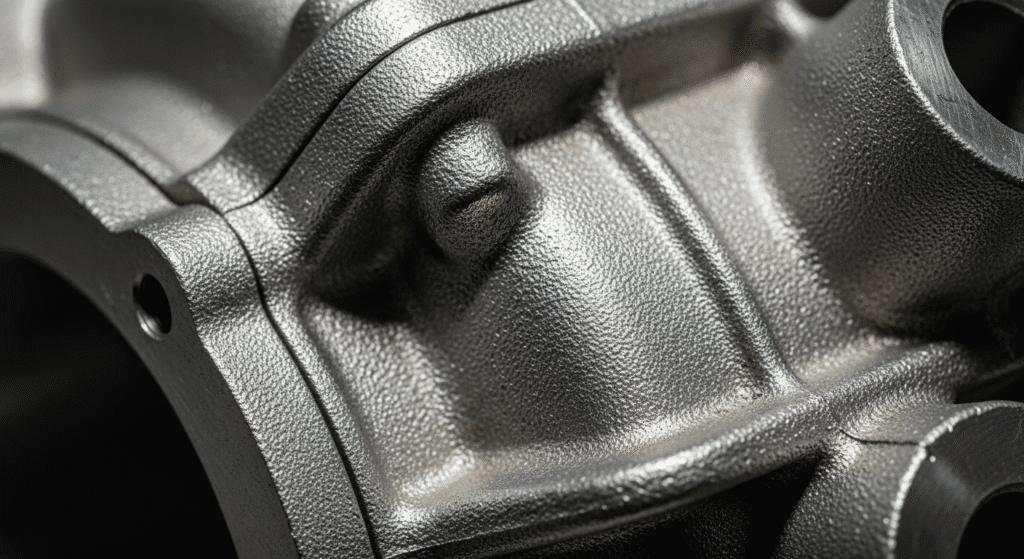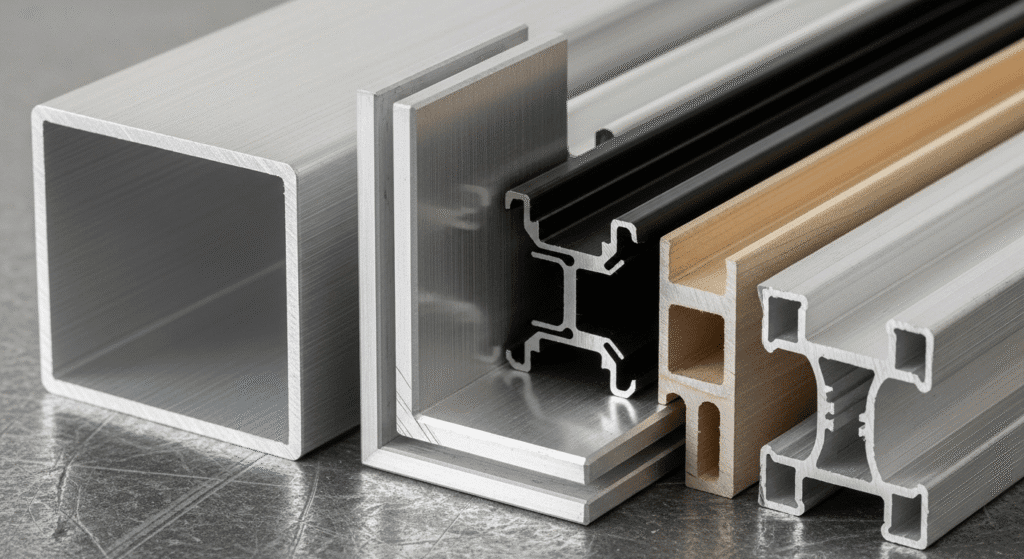Cast aluminum and extruded aluminum are two fundamentally different ways of shaping aluminum into useful products, each with distinct advantages for specific applications. Cast aluminum involves pouring molten metal into molds to create complex shapes, while extruded aluminum pushes heated metal through a die to create consistent profiles.

Cast aluminum is created by melting aluminum and pouring it into a mold where it cools and solidifies into the desired shape. This process dates back thousands of years and remains one of the most versatile ways to create complex aluminum parts.
The casting process allows manufacturers to create intricate three-dimensional shapes that would be impossible with other methods. Think of engine blocks, decorative furniture, or complex machinery housings.
Cast aluminum typically contains silicon and other alloying elements that improve its flow characteristics during the molten stage. These additions make the metal easier to work with but can affect its final properties.
Extruded aluminum starts as a cylindrical billet that’s heated and forced through a steel die under tremendous pressure, creating long pieces with consistent cross-sections.
This process excels at creating linear products like window frames, heat sinks, and structural beams. The continuous nature of extrusion makes it perfect for producing long sections with uniform properties throughout.
Extruded aluminum generally uses purer alloys than casting, particularly the 6000 series alloys that balance strength with excellent extrudability. These alloys maintain consistent mechanical properties along the entire length of the extrusion.

Cast aluminum’s manufacturing process revolves around melting and pouring, allowing for batch production of individual parts with varying sizes and complexities. You can cast a single prototype or thousands of identical pieces using the same mold.
Extrusion requires significant upfront investment in dies but then produces continuous lengths at high speed. The process runs continuously, pushing out aluminum profiles that can be cut to any required length.
The fundamental difference is that casting fills a cavity to create a shape, while extrusion pushes material through an opening.
Tensile Strength: Extruded aluminum typically achieves 30-40% higher tensile strength than cast aluminum. Cast aluminum ranges from 20,000-45,000 PSI. Extruded aluminum commonly reaches 35,000-65,000 PSI
Ductility: Extruded aluminum offers superior ductility and can bend without cracking. Cast aluminum tends to be more brittle due to its grain structure.
Weight: Both materials have similar densities (around 2.7 g/cm³). Cast parts often require thicker walls for strength, making them heavier overall, Extruded profiles can use thinner walls while maintaining structural integrity.
Surface Finish: Cast aluminum surfaces show texture from the mold and may have imperfections. Extruded aluminum produces smooth, consistent surfaces ideal for anodizing. Cast parts typically require more finishing work to achieve a polished appearance
Cast aluminum wins decisively when it comes to creating complex three-dimensional shapes. You can cast undercuts, hollow sections, and intricate internal geometries that would be impossible to extrude.
Extrusion limits you to shapes that can be pushed through a die opening – meaning the cross-section must be consistent along the entire length. However, this constraint becomes an advantage for products needing uniform profiles.
Extruded aluminum generally offers better corrosion resistance due to its more homogeneous structure and purer alloy composition. The consistent grain structure created during extrusion reduces weak points where corrosion might start.
Cast aluminum can develop porosity during solidification, creating tiny voids where moisture and corrosive agents can accumulate.
Extruded aluminum machines beautifully, producing clean cuts and smooth finishes with standard tooling. The consistent grain structure means predictable cutting forces and excellent dimensional stability.
Cast aluminum can be more challenging to machine due to potential hard spots from alloying elements and possible internal porosity. You might encounter tool wear issues or surface irregularities during machining.
Welding presents opposite challenges. Cast aluminum often contains silicon, making it easier to weld without hot cracking. Extruded aluminum, especially high-strength alloys, requires more careful heat control and proper filler material selection.
Cast aluminum involves higher upfront costs for mold creation but lower per-unit costs for complex shapes. A sand casting mold might cost a few hundred dollars, while a permanent mold could run tens of thousands.
Extrusion dies cost between $2,000 and $10,000 typically, but the continuous production process keeps per-foot costs low. The real savings come from minimal secondary operations and consistent quality.
For low-volume production of complex parts, casting usually costs less. For high-volume production of consistent profiles, extrusion becomes more economical.
Cast aluminum dominates in applications requiring complex three-dimensional shapes and internal geometries:
Extruded aluminum excels where consistent linear profiles and structural integrity matter most:
Yes – cast aluminum often shows mold marks and has a slightly rough texture, while extruded aluminum has smooth, consistent surfaces with visible linear grain patterns along its length.
Both use recyclable aluminum, but extrusion typically uses less energy per pound of finished product. Cast aluminum can incorporate more recycled content, making both processes relatively sustainable.
Cast aluminum parts might take 4-8 weeks including mold creation, while extruded aluminum can often ship within 2-3 weeks once the die is made. Stock extrusions are available immediately.
